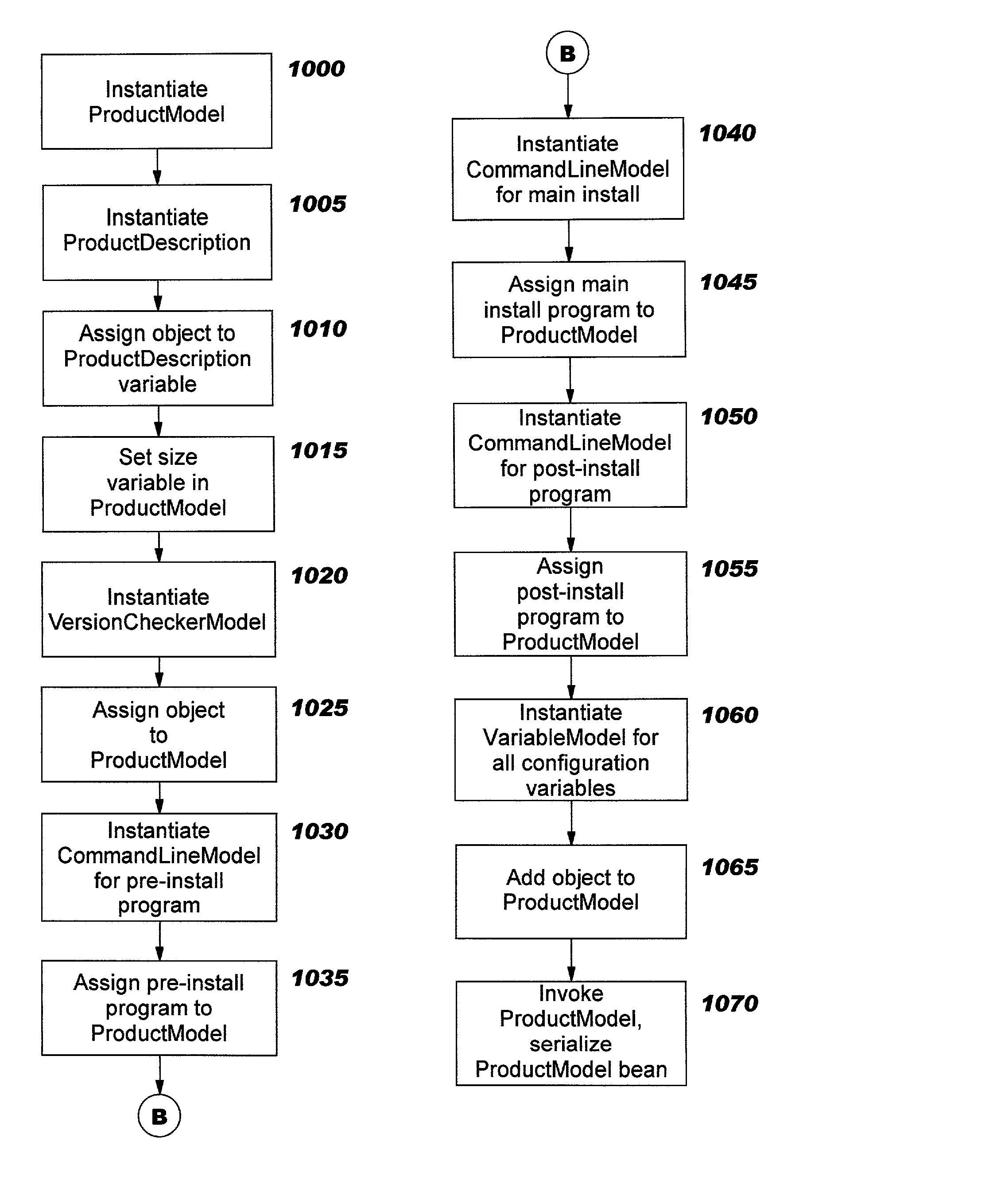Run-time rule-based topological installation suite
a topological installation and runtime rule technology, applied in computing, instruments, electric digital data processing, etc., can solve the problems of difficult use for those without considerable technical skills, the process of performing the installation is complex, and the range of the installation is large and complex
- Summary
- Abstract
- Description
- Claims
- Application Information
AI Technical Summary
Benefits of technology
Problems solved by technology
Method used
Image
Examples
Embodiment Construction
[0036] FIG. 1 illustrates a representative computer hardware environment in which the present invention may be practiced. The device 10 illustrated therein may be a personal computer, a laptop computer, a server or mainframe, and so forth. The device 10 typically includes a microprocessor 12 and a bus 14 employed to connect and enable communication between the microprocessor 12 and the components of the device 10 in accordance with known techniques. The device 10 typically includes a user interface adapter 16, which connects the microprocessor 12 via the bus 14 to one or more interface devices, such as a keyboard 18, mouse 20, and / or other interface devices 22 (such as a touch sensitive screen, digitized entry pad, etc.). The bus 14 also connects a display device 24, such as an LCD screen or monitor, to the microprocessor 12 via a display adapter 26. The bus 14 also connects the microprocessor 12 to memory 28 and long-term storage 30 which can include a hard drive, diskette drive, t...
PUM
 Login to View More
Login to View More Abstract
Description
Claims
Application Information
 Login to View More
Login to View More - R&D
- Intellectual Property
- Life Sciences
- Materials
- Tech Scout
- Unparalleled Data Quality
- Higher Quality Content
- 60% Fewer Hallucinations
Browse by: Latest US Patents, China's latest patents, Technical Efficacy Thesaurus, Application Domain, Technology Topic, Popular Technical Reports.
© 2025 PatSnap. All rights reserved.Legal|Privacy policy|Modern Slavery Act Transparency Statement|Sitemap|About US| Contact US: help@patsnap.com



